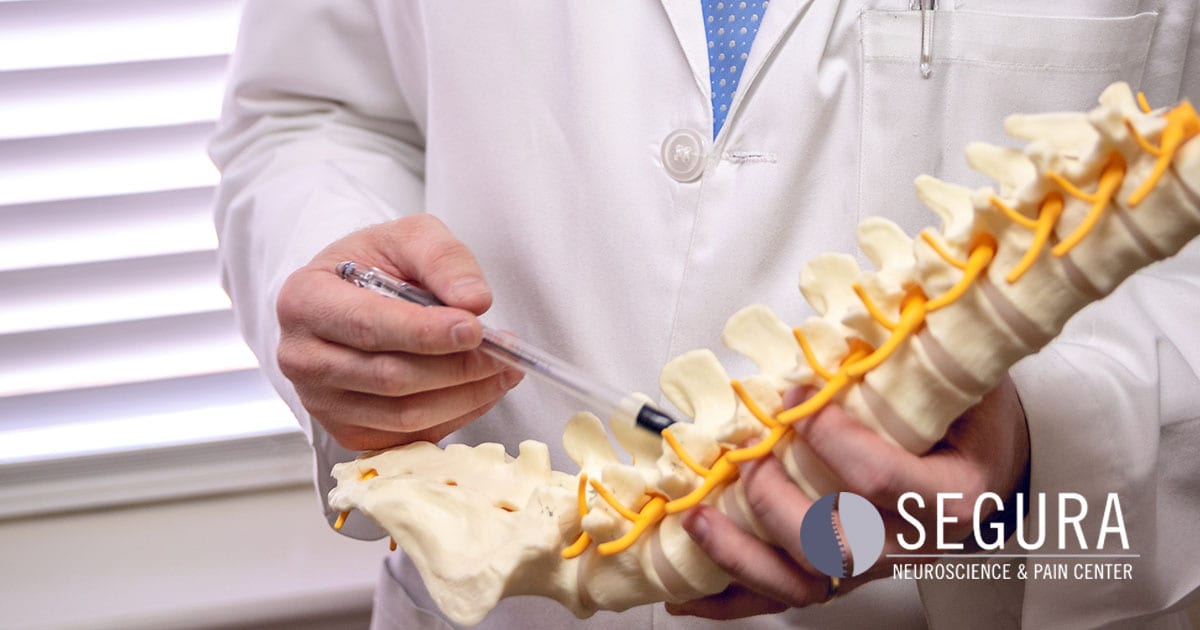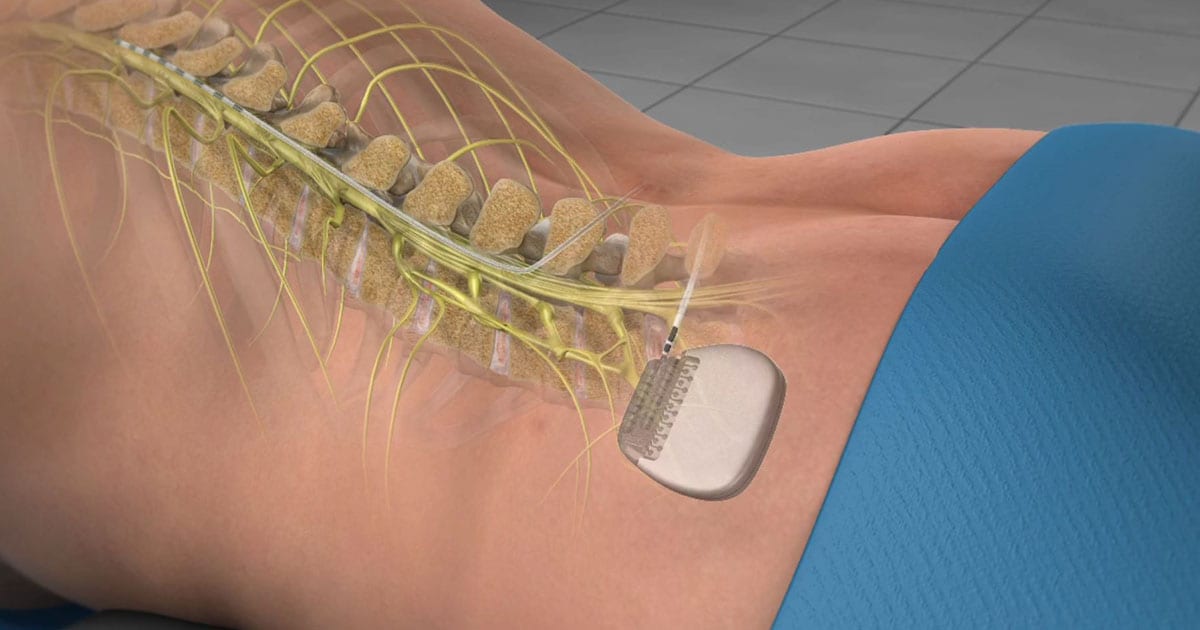
Patients suffering from conditions like degenerative disc disease, sciatica, or spinal stenosis may sometimes feel as though their pain will last forever. Two treatments which can successfully treat lower back pain are often debated - spinal cord stimulator versus spinal fusion.
In today’s post, we’ll explain how these very different approaches can successfully treat the same pain, and which might be right for you.
What is a lumbar spinal fusion?
Degenerative spinal conditions, deformities, and injuries can lead to spinal instability. When the instability of the lower spine places pressure on the spinal cord or spinal nerves, it can cause back pain or leg pain. A lumbar spinal fusion surgically joins, or “fuses” the damaged disc(s) into a single, more stable structure. This surgery restores the normal height of the disc and stabilizes the vertebral segment. The fusion of the disc relieves the pressure on the spine, which in turn addresses the pain associated with compressed nerves. However, the procedure is irreversible, and can, over time, lead to adjacent segment disease - extra wear and tear on spinal joints above and below the area of fusion.
What is spinal cord stimulation?
Spinal cord stimulation is a technique for relieving pain that works by continuously delivering a small electrical current to the spinal cord to mask pain signals before they reach the brain. In this procedure, one or more insulated wire leads are guided through an epidural needle, or a small incision, and into the area surrounding the spinal cord. By converting a painful sensation to a tingling one, spinal cord stimulation frees patients from long-lasting pain and allows them to return to a more normal lifestyle. Patients must first undergo a “trial phase” before committing to long-term treatment with a spinal cord stimulator. If the patient’s pain is effectively relieved during the two-week trial, they may opt to receive the permanent device.
When considering a spinal cord stimulator versus spinal fusion, patients who want to avoid surgery, or have pain caused by a failed surgery may opt for spinal cord stimulation. This treatment is proven to help people suffering from conditions like degenerative disc disease, spinal stenosis, and sciatica.

How are these procedures different?
When comparing spinal cord stimulator versus spinal fusion, spinal cord stimulation does not alter the structure of the spine itself. It changes the way the brain perceives the pain. The pain is still there; however, it is masked.
On the other hand, the goal of lumbar spinal fusion is to reduce actual pain through corrective surgery. Lumbar spinal fusion does change the integrity of the spine. However, some patients with severe lower back and sciatic pain are not candidates for spinal fusion.
How do you know which procedure is best for you?
If you are not a strong candidate for surgery, spinal cord stimulation may be a good option for pain relief. This solution will enable you to feel as if your pain is reduced so that you can return to a more normal lifestyle.
However, if you are younger and can tolerate surgery, lumbar spinal fusion may be a better way to resolve your pain from an injury or chronic condition. For those suffering from conditions like lumbar spinal stenosis, a minimally-invasive option called the Vertiflex Superion implant can also help to alleviate pain.
Understand your options
The best way to know what’s right for you is to see a pain specialist at Segura Neuroscience and Pain Center. Drs. Segura and Robertson are experts in assessing pain and prescribing the right treatment for you. If you are interested in learning more about spinal cord stimulator versus spinal fusion, contact us today for an evaluation.
This website is not intended provide specific medical advice, medical diagnosis, opinion, treatment or services to you or to any other individual. Through this website and links to other websites, Segura Neuroscience & Pain Center provides general information for educational purposes only. The information provided in this site is not a substitute for medical or professional care. You should not use this information in place of the advice of your physician or other healthcare provider. Segura Neuroscience & Pain Center is not liable or responsible for any advice, course of treatment, diagnosis or any other information, services or product you obtain through this website.
